Published in October 2020, this book from publishers Pen & Sword continues the Bob Pixton’s series on the Great Central Railway, following on from his previous books Joint Line Operations Around Manchester and in South Yorkshire and Main Line Operations Around Manchester.
The book is hardback and measures around 28.45 cm x 22.1 cm, has 232 pages and 450 black-and-white illustrations, maps, and track diagrams. It has a published price of £30, although at the time of writing it can be purchased online from Pen & Sword for £21.00 and from Amazon for £23.59.
The book has a sub-title From the M S & L R Period to British Railways, although I think that’s rather superfluous given the series title of “Great Central Railway”.
At first sight, I was expecting a book titled Sheffield Main Line Services to concentrate on services along the Great Central Railway’s London Extension. Fortunately, I was wrong, as besides describing Great Central Railway services in Sheffield, there are extensive descriptions of other Great Central lines around South and West Yorkshire, from Wakefield in the north to Retford in the south, and from Woodhead in the west to Doncaster in the east.
Many of the places covered could be termed “less-glamorous” for railway photography, but they are what makes this book stand apart. Places such as Barnsley and Wakefield receive plenty of coverage, as well as an interesting description of the building of Wath Yard.
Although not detracting from the book’s merits, there are a number of errors that should have been picked up during the proofreading stage. Opposite the title page is a list of photographs that are totally confusing. It quotes the front cover as having two photos when there is only one, and 69902 which is listed as being on the front is actually on the rear. Also, the contents only list two photos on the rear when there are three, and the photo listed as being at the top showing a goods train entering Woodhead tunnel is at the bottom, whilst the top photo showing 63917 at Mexborough is listed as being the lower photo.
The book contains a number of maps, but this should have been the most important one as it purports to show the area covered by the book. However, it appears to be a reproduction of a very poor photo copy with the names of many locations completely indecipherable.
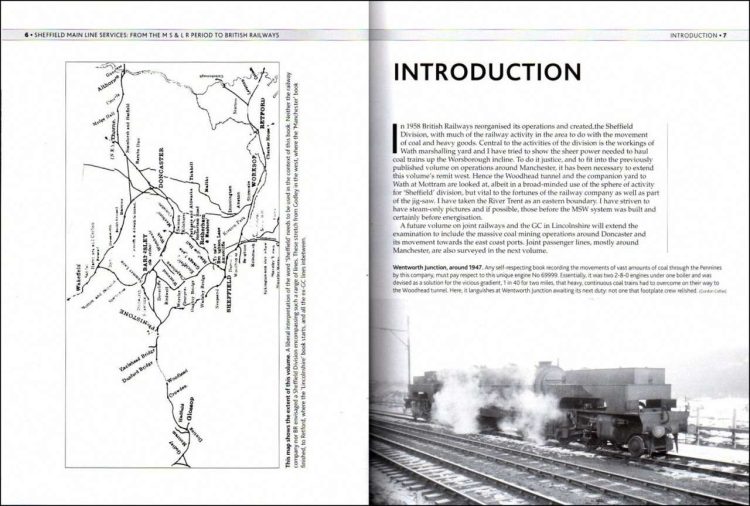
The book stands out from similar volumes by including many examples showing human interest, such as the right-hand page below.
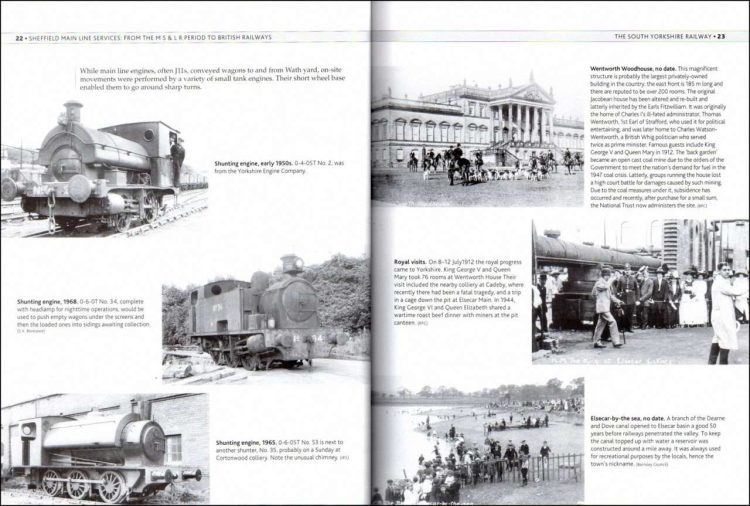
Throughout the book, there are photographs of many signal boxes, such as the ones on the right-hand page below. But like so many other photos in the book, their reproduction quality is sadly lacking.
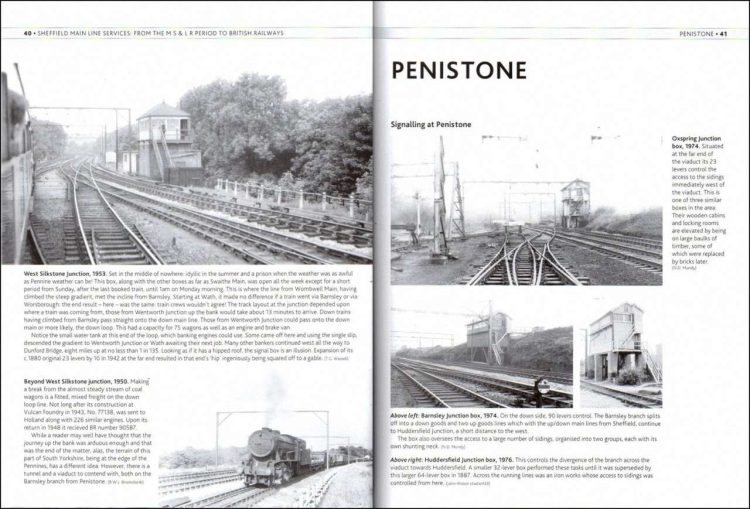
Although there is an extensive narrative to accompany the photos, it seems that in an effort to include as many historical photos as possible, quality has been sacrificed in the name of quantity by reproducing too many at too small a size as in the top three on the right-hand page below.
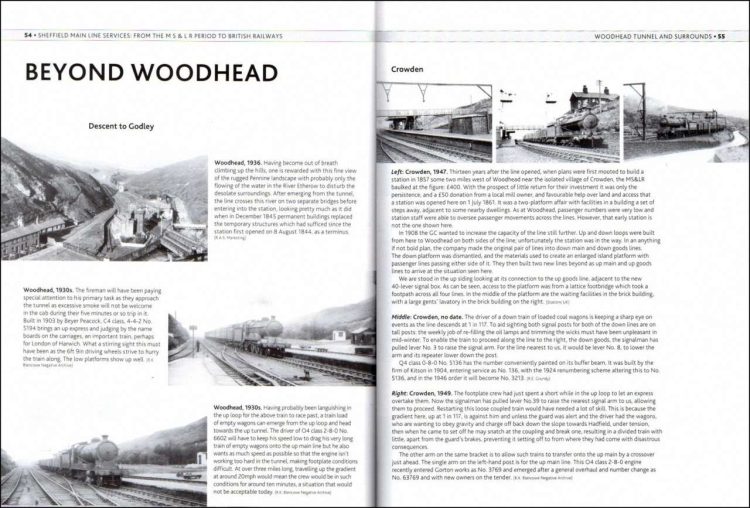
Further examples of poor proofreading are in the lower left photo below which clearly shows the name of the signal box as the single word “Deepcar”, yet in four other places on these pages, the location is wrongly named as Deep Car, Similarly, at top-right, the signal box name omits the h in Warncliffe.
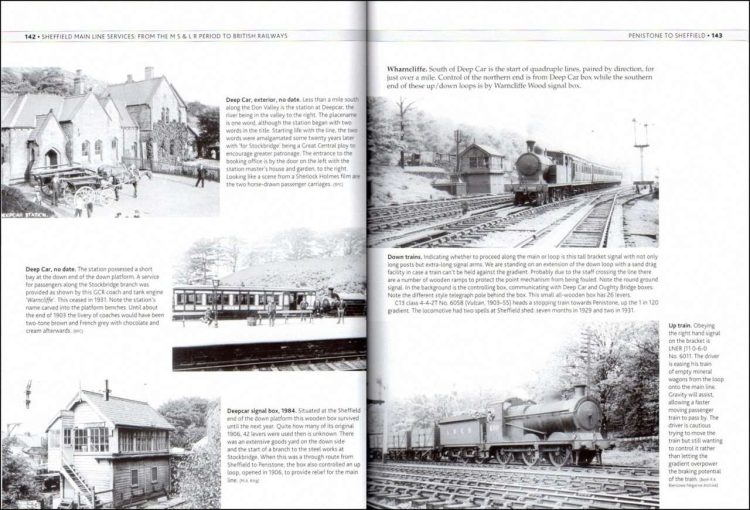
The quality of the photos on the pages below reflects many in the book as being flat and lacking in contrast. The upper-right photo states that “the power cables in preparation for the impending electrification separate the two routes”, yet they are not apparent in the print. The lower right photo supposedly shows Darnall East Box in 1974 with the engine shed on the right, but Darnall shed closed in 1963.
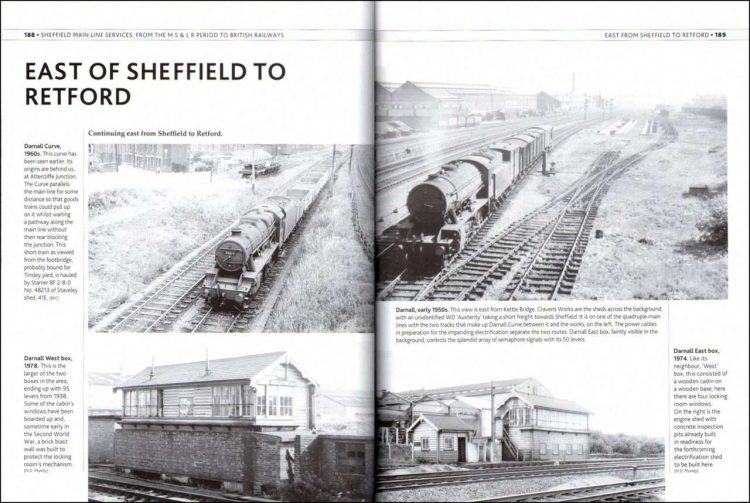
In summary, this book contains a huge amount of historic material on a badly neglected part of the rail network. The book is profusely illustrated and provides detailed descriptions of the operation and infrastructure surrounding the unglamorous railways around South and West Yorkshire. A good historical record of the Great Central centred on Sheffield and despite the book’s misleading title highly recommended.
The book is available to purchase from Amazon and from Pen & Sword.
We would like to thank Pen & Sword for providing RailAdvent with a copy of the book for review.





Responses